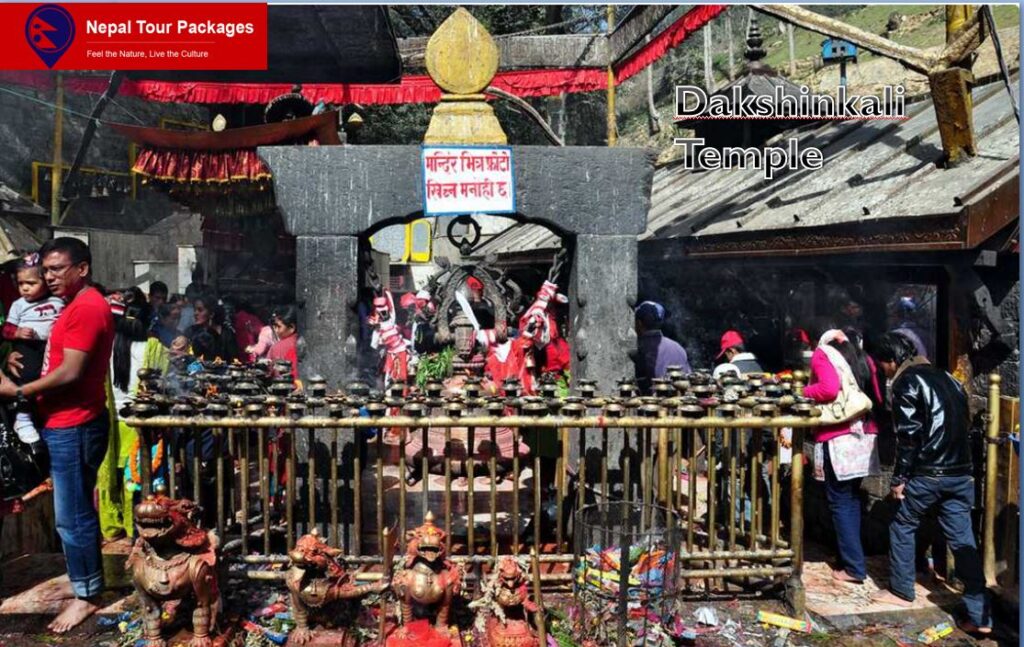The Dakshinkali Temple is a famous temple in Nepal, located just one kilometer from the village of Pharping. It is dedicated to the powerful Goddess Kali, the fierce wife of Lord Shiva. The temple is known for its unique rituals, especially the animal sacrifices that take place twice a week. Male goats and cockerels are sacrificed as offerings to the goddess.
The name “Dakshinkali” comes from two words: “Dakshin,” meaning “south,” and “Kali,” the name of the goddess worshipped here. The statue of the goddess stands on a corpse, symbolizing the victory of good over evil. She has four arms, each holding different items: a sword, a skull cup, and a severed head. This statue represents a strong and powerful goddess. The temple was built in 1855 by Rani Rashmoni, a devotee of Kali.

Best Time To Visit Dakshinkali Temple
The best time to visit Dakshinkali Temple is during the Dashain Festival, Nepal’s version of Durga Puja. This festival happens in September or October and lasts for fifteen days. The temple is decorated with lights and flowers, and thousands of people come to pray and offer incense. Many bring animals to sacrifice to the goddess. The festival features grand feasts, loud chants, and music from drums, bells, cymbals, and conches. This is the most vibrant and lively time to visit the temple.
Legend of Dakshinkali Temple
According to legend, the Goddess Kali appeared in a dream to a Malla king who ruled Nepal in the 14th century. She told the king to build a temple dedicated to her. The king obeyed and built the temple with a stone image of the goddess placed inside the shrine.
Animal Sacrifice at Dakshinkali Temple
Devotees of Goddess Kali believe that sacrificing animals pleases her and grants their wishes. There are many stalls near the temple selling roosters and goats for this purpose. Sacrifices happen twice a day, once in the morning and again in the afternoon on Tuesdays and Saturdays. After each sacrifice, the temple is briefly closed for purification. The ceremony is quick, and the meat from the sacrificed animals is taken home by the devotees for a meal.
While some people oppose this practice, believing the goddess does not want innocent animals to suffer, others think that sacrificing animals helps them to be reborn as humans. These beliefs are based on tradition rather than factual evidence, so devotees follow their own customs.
How To Reach Temple
The temple is about a 45-minute drive from Kathmandu. It is best to hire a taxi because public buses can be crowded. Buses to the temple leave from Ratna Park, Old Buspark, and Martyr’s Road. The drive offers beautiful scenic views along an uphill road. For an adventurous trip, some people prefer to ride motorcycles.
For Further Information
Nepal Tour Package provides the best tour packages for the travel lovers of each type, whether it is Adventure Tour, Spiritual Tour, Beach Tour, Family Tour, Heritage Tour, Holiday Tour & Wildlife Tour.
For more information call our tour experts: +91 –7982194316
Get the best Holiday Offers
Email Us at :- info@nepaltpurpackages.com




